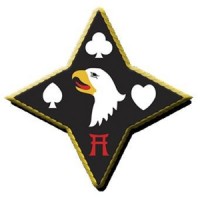Written by Staff Sgt. Jill People
49th Public Affairs Detachment


Fort Polk, LA – A long line of military vehicles from 101st Airborne Division Sustainment Brigade (Lifeliners) and 2nd Brigade Combat Team (Strike), 101st Airborne Division (Air Assault) parks along the side of the road at the Intermediate Staging Base in Alexandria, Louisiana, in preparation for movement to the Joint Readiness Training Center’s (JRTC) training area called the “box” at Fort Polk, Louisiana, on October 3rd, 2015.
The 2nd BCT is conducting a training rotation at JRTC with the support of other division assets like the 101st Airborne Division Sustainment Brigade and the 101st Airborne Division Artillery Regiment.
[youtube]https://www.youtube.com/watch?v=O17y_whperU[/youtube]
The rotations allow for Soldiers to receive realistic, relevant and rigorous decisive action training.A key enabler in this training is the movement control teams who coordinate and synchronize movement of military assets.
The 613th Movement Control Team, pushes out troops out to the box in intervals, said Sgt. Bradley Sims, a movement specialist from 613th MCT, 129th Combat Sustainment Support Battalion, 101st Airborne Division Sustainment Brigade.
“I give the intervals for the starting point to ensure the proper space on the highway,” he said.
Within the interval timeline many things have to happen to get the trucks safely moving to their objectives.

“We are getting ready to transition from the ISB to the box at JRTC to assume our position and go to work,” said Chief Warrant Officer 2 Andrew Cunningham, a platoon leader from the 101st Airborne Division Artillery Regiment, 101st Airborne Division (AASLT).
With trucks piled high and Soldiers fully geared up ready to expect contact from notional enemy forces, the 613th MCT goes to work checking each vehicle and shuffling through paperwork stacked on a clipboard.
The process is fast, but thorough, to ensure full accountability of equipment and Soldiers. Once the green light to go is given, the convoy is directed to roll out and into the training area.
Jarvis explained that the MCTs mission encompasses many areas.
“Anything that can go by ground, air, rail or sea – we can push it out.”
But for the mission at JRTC supporting 2nd BCT’s training rotation it is primarily ground movement to and from the “box” ensuring mission readiness and success.


